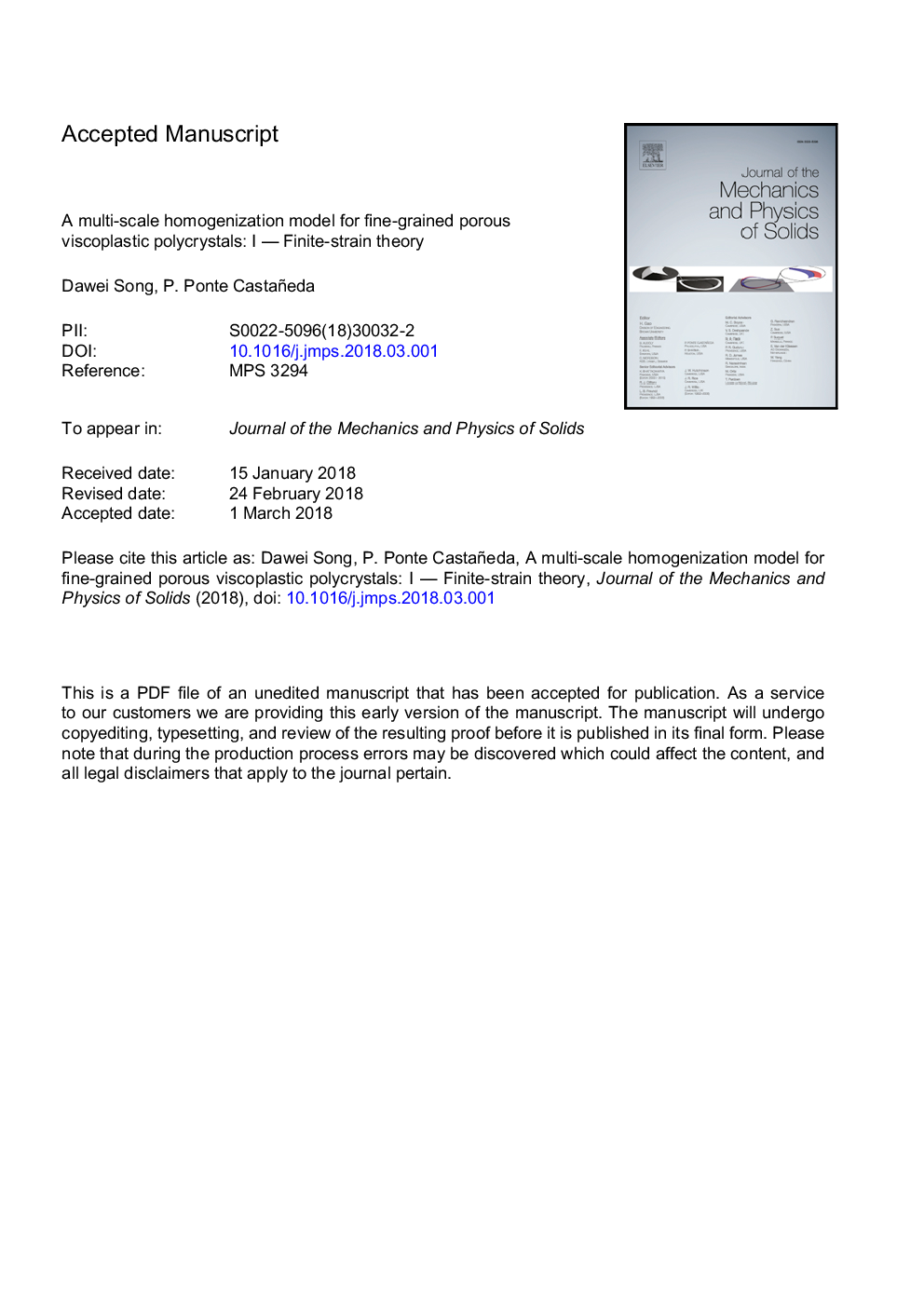| Article ID | Journal | Published Year | Pages | File Type |
|---|---|---|---|---|
| 7177432 | Journal of the Mechanics and Physics of Solids | 2018 | 47 Pages |
Abstract
We make use of the recently developed iterated second-order homogenization method to obtain finite-strain constitutive models for the macroscopic response of porous polycrystals consisting of large pores randomly distributed in a fine-grained polycrystalline matrix. The porous polycrystal is modeled as a three-scale composite, where the grains are described by single-crystal viscoplasticity and the pores are assumed to be large compared to the grain size. The method makes use of a linear comparison composite (LCC) with the same substructure as the actual nonlinear composite, but whose local properties are chosen optimally via a suitably designed variational statement. In turn, the effective properties of the resulting three-scale LCC are determined by means of a sequential homogenization procedure, utilizing the self-consistent estimates for the effective behavior of the polycrystalline matrix, and the Willis estimates for the effective behavior of the porous composite. The iterated homogenization procedure allows for a more accurate characterization of the properties of the matrix by means of a finer “discretization” of the properties of the LCC to obtain improved estimates, especially at low porosities, high nonlinearties and high triaxialities. In addition, consistent homogenization estimates for the average strain rate and spin fields in the pores and grains are used to develop evolution laws for the substructural variables, including the porosity, pore shape and orientation, as well as the “crystallographic” and “morphological” textures of the underlying matrix. In Part II of this work has appeared in Song and Ponte Castañeda (2018b), the model will be used to generate estimates for both the instantaneous effective response and the evolution of the microstructure for porous FCC and HCP polycrystals under various loading conditions.
Keywords
Related Topics
Physical Sciences and Engineering
Engineering
Mechanical Engineering
Authors
Dawei Song, P. Ponte Castañeda,
